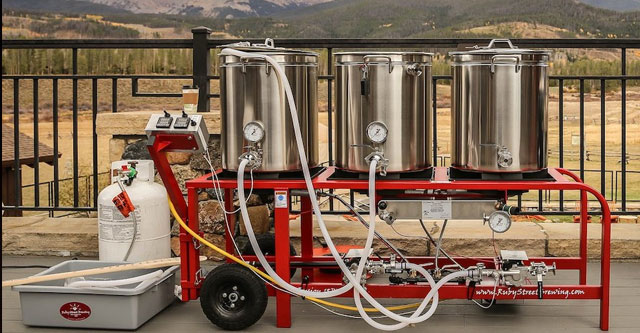Techniques to your own beer at home

All-wheat brewing course procedure
In this mini course for all-wheat brewing we will see the process, the equipment and find out how to take the first steps for this method. This method requires very different equipment, study and timing compared to the normal hopped malts but can give a lot of satisfaction. Here we mainly analyze the phases of brewing, but there are various systems and infinite types of systems on which some phases have differences.
SANITATION: Before starting to work remember that sanctification is very important and that the equipment must always be sanctified.
GRINDING IN ALL GRAIN Grinding the malt in grains, it is important that the grains are broken but not creating excessive flour that could create problems of filtration.
THE MASH IN ALL GRAIN BIRRIFICATION Prepare a pot with water at the temperature of the first step of mash. Mash is the saccharification of malt starch. This process serves to transform the starch into fermentable sugars so that these sugars are subsequently transformed into alcohol during fermentation. After inserting the ground malt into the water, check the temperature with a thermometer and bring the temperature to the measurement of the first mash step. Keep this temperature for the indicated time.
Keep the mixture in motion as much as to ensure that the mixture is evenly heated. Follow the mash ramps as marked by the recipe. After the steps of mash do the test with iodine tincture to verify the successful saccharification (in a white saucer pour a few drops of must and add a drop of tincture: the absence of shades of blue-purple color is confirmation) , if not, continue until saccharification has taken place. SWITCH THE SAMPLE WITH IODIUM DYEING In the meantime prepare the water for the sparging bringing about 15 liters of water to about 78 ° C
SPARGING IN ALLGRAIN The process now involves washing the threshers, pouring the water previously prepared to pour it over the threshers. Usually the recommended amount of water for this operation is 3 liters per kg of malt. Remove the grains and filter the must to proceed with the boiling
FILTRATION Filter the must slowly in another pot to proceed with the boiling.
BOILING OF THE MUST Boil the must by following the recipe by making the hops of hop. The hops that is inserted at the beginning of boiling gives the bitterness to the beer while the final throws (those that boil for less time) give aroma to the beer. The hops must be kept inside the must until the end of boiling.
WHIRLPOOL Whirlpool is a widely used method in home brewing. Whirlpool is a common system used by breweries to separate the hops (usually in pellets) from the must after boiling. Essentially the must is quickly turned to create a whirlwind that leaves the hops residues in the center of the boiling vat. Homebrewers can use the whirlpool in their brewing process. With a fairly large scoop or ladle the must is turned in a single direction until you see a reel, wait 10-15 minutes and slowly remove the must from the tap. In this way most of the hops will not end up in the fermenter for a better result in the finished beer.
COOLING Quickly cool the must with a cooling coil or a plate heat exchanger, then pass the must into the fermenter and proceed with the yeast inoculation when the temperature is between 18 and 25 degrees.
